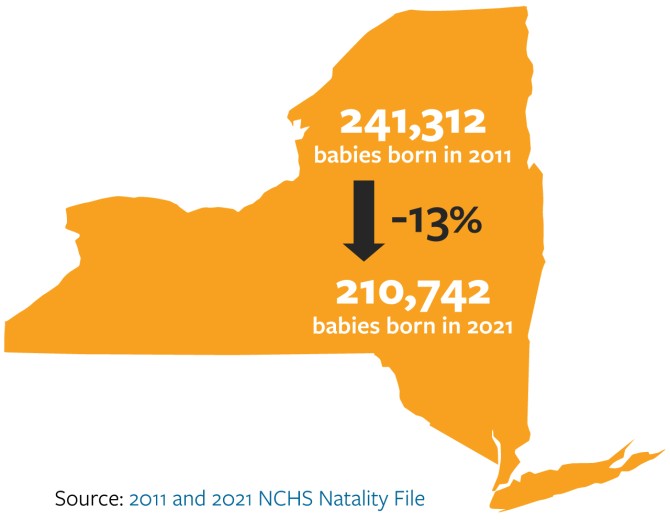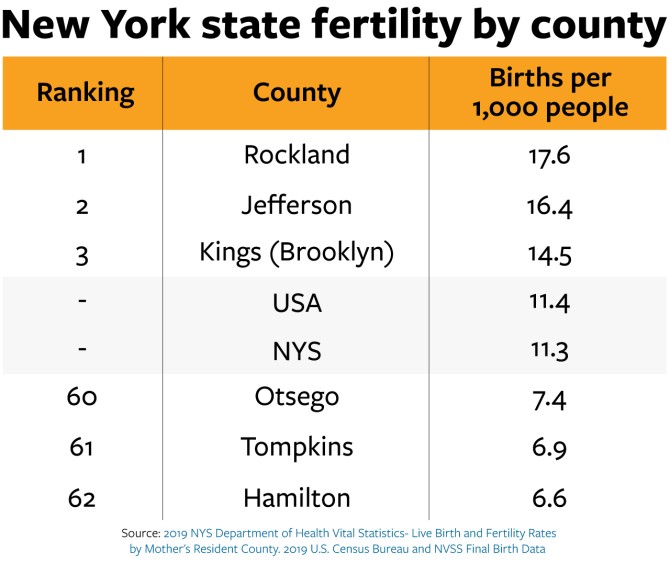New York’s fertility rate drops, average age of mothers rises
By Jim Hanchett
A decline in New York’s childbirth rate is showing no sign of reversing and many women are waiting longer to have children, according to newly compiled data from the Program in Applied Demographics (PAD) in the Cornell Jeb E. Brooks School of Public Policy.
In 2021, about 211,000 babies were born in New York. In 2011, that number was 241,000.
New York state’s total fertility rate – the average number of births a woman would have in her lifetime if current patterns continue – has dropped from 1.85 in 2009 to 1.55 in 2021. (This type of fertility rate is most useful for comparing trends across time because its calculation considers fertility patterns by age.)
The 2021 TFR for New York is below the U.S. average of 1.71, and far below the 2.1 “replacement” rate – the point at which a developed country’s population rate would neither rise nor decline. Replacement level varies by area and can be higher or lower than the theoretical 2.1, depending on mortality and migration.
Women who do have babies are waiting until later in life. The average age of first birth for New York women was 28.9 in 2021, more than a year older than the average age in 2011 (27.2). The fertility rate has increased significantly for women 35-44 but not enough to offset the decline in childbirths by younger women.
“Other states in the Northeast are also facing declining fertility and an aging population, which has many implications for policy and infrastructure,” said PAD researcher Leslie Reynolds. “But since New York has an especially unique and diverse state geography, also paying attention to local and county trends and using them to inform policies is vital.”
In addition to the declining birth rate, other findings include:
- The TFR is highest for women who live in Rockland, Jefferson and Orange counties and lowest for women in Otsego, New York City (Manhattan) and Tompkins counties.
- 65% of the households with babies were led by opposite sex, married couples. 17% were single mothers, 13% were cohabiting couples of any sex, and 5% were single fathers. As the children grew to toddler stage and beyond, the number of married couples fell and the percentage of single moms increased.
- There were about 4,270 more boys than girls born in 2021.
- Liam, Noah and Olivia were the most popular baby names in 2020.
PAD assembled the fertility statistics from several sources, including some that have not been previously reported, such as changes in fertility rates by age over the past two decades. They were compiled in PAD’s most recent Tidbit: Topics in Demography, a series of briefs on New York population dynamics.
PAD works closely with the New York State Department of Labor, the U.S. Census Bureau and other organizations, informing decision-making, evaluation and policy across New York state. PAD is housed in the Cornell Population Center, part of the Cornell Jeb E. Brooks School of Public Policy.
Jim Hanchett is assistant dean of communications for the Cornell Jeb E. Brooks School of Public Policy.
Media Contact
Abby Kozlowski
Get Cornell news delivered right to your inbox.
Subscribe


